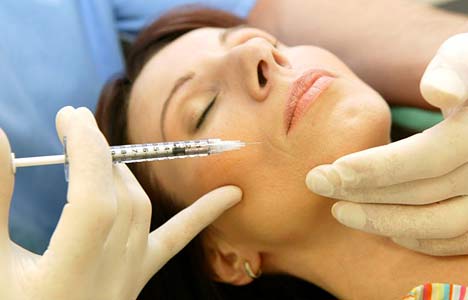
When the temporomandibular joint (TMJ), which links the jawbone to the skull, sustains injury or excessive strain, it leads to a TMJ disorder, triggering persistent jaw pain and headaches. Thankfully, your dentist can offer several remedies to alleviate your discomfort. Frequently, they might propose teeth realignment or the use of an oral appliance. Alternatively, they might suggest BOTOX treatment in certain instances! Curious about the connection between BOTOX and TMJ therapy? Continue reading to uncover the details.
What Is TMJ Disorder?
TMJ disorder encompasses a broad spectrum of issues related to your jaw joints and the coordinating muscles. The exact cause of TMJ disorder isn’t always clear, but it might stem from jaw injuries, repetitive teeth grinding or clenching, or even the onset of arthritis. In addition to experiencing jaw pain, common symptoms are headaches, lockjaw, or a clicking sound when moving your mouth.
How Does BOTOX Help Treat TMJ Disorder?
While BOTOX is renowned for its ability to smooth wrinkles and fine lines, its properties also render it a potent solution for alleviating TMJ-related discomfort. The procedure involves a small injection of botulinum toxin, which impedes the nerve signals responsible for muscle contractions.
When BOTOX is administered into the muscles, it induces relaxation and prevents the unconscious motions that often contribute to TMJ disorder. Thanks to BOTOX, your dentist can help mitigate the strain on your jaw joints, affording them an opportunity to recuperate.
The injection’s effects usually last around three to six months. You can schedule follow-up treatments to maintain the benefits during this time. You also have the option to seek additional treatments aimed at addressing the root cause of your TMJ disorder, potentially leading to a permanent resolution of the issue.
What Should You Expect from the Treatment?
The procedure typically lasts for 10-30 minutes, depending on how many injections are needed. It’s usually not very uncomfortable, but if you’re worried about the injections, your dentist might use nitrous oxide to help you feel relaxed.
BOTOX is a method that doesn’t involve surgery and isn’t invasive. You can go back to your normal activities right after the procedure. Just remember not to touch or massage the injection site and consider limiting physical activity for a short time.
If you’re tired of dealing with constant jaw pain and frequent headaches, talk to your dentist today. They can help you explore whether BOTOX or another treatment might be the solution that you have been looking for!
About the Practice
Are you dealing with pain as a result of TMJ dysfunction? Fortunately, the team at Sleep Rehab is here to help. Led by Dr. Keane Fedosky, they offer BOTOX to their Plano patients to get rid of the discomfort. With their help, a pain-free, beautiful smile is within reach! If you are interested in getting BOTOX to treat TMJ dysfunction or you want to schedule a consultation with Dr. Fedosky and the Sleep Rehab team, you can visit their website or call their office at (972) 753-3737.
